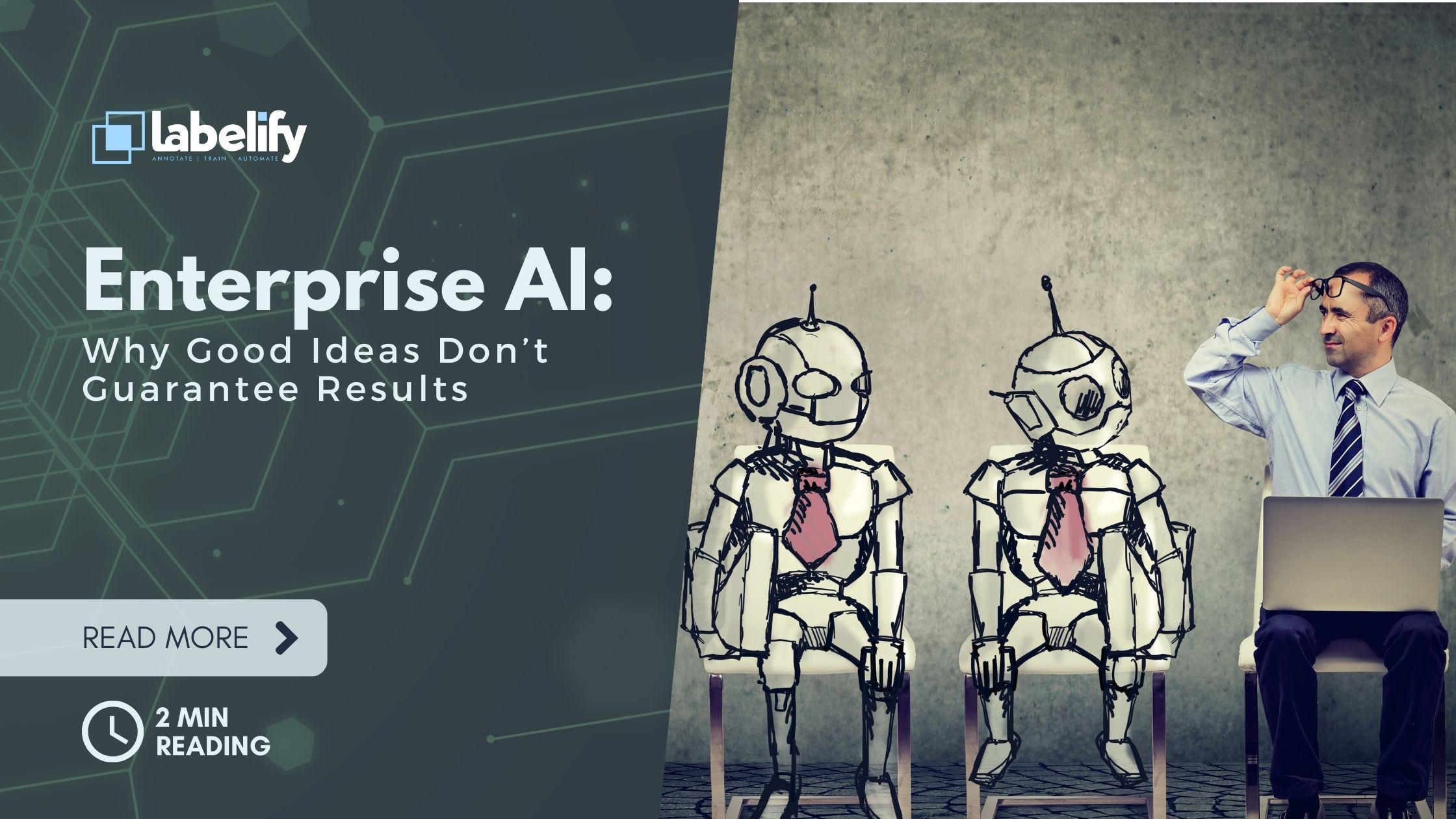As a team, we've witnessed the alarming failure rates of enterprise AI products, with estimates ranging from 70% to 80%. These failures are expected to persist, with only 15% of AI use cases projected to succeed by 2022.
The challenges lie in effectively managing and leveraging training data, as well as the scarcity of skilled AI professionals.
In this article, we'll explore the specific points of failure, the importance of taking a holistic approach, and strategies for overcoming these obstacles.
By understanding and implementing effective solutions, enterprises can increase their chances of achieving AI product success.
Key Takeaways
Enterprise AI products often fail because of the challenges in training data and the scarcity of skilled AI professionals. To overcome these obstacles, organizations need to take a comprehensive approach to AI product development, focusing on problem-solving and building a strong AI team.
By addressing these issues and implementing effective solutions, enterprises can increase their chances of success in the rapidly evolving field of artificial intelligence.
High Failure Rate of AI Projects
AI projects often fail in enterprises, with a high failure rate. The reasons for these failures have become quite predictable, hindering the progress of AI initiatives.
Lack of strategy and the pressure to move quickly without caution are common culprits. Organizations often underestimate the challenges posed by training data, which can lead to poorly trained models and slow development processes.
Another major pitfall is solving the wrong problem, as a poor product-market fit can result in failure. Time and costs are significant factors, as developing AI products requires careful planning and resource allocation. Moreover, the shortage of skilled AI professionals poses a challenge, making it difficult to find and retain talent.
Challenges in Training Data
Addressing the high failure rate of AI projects, organizations face the challenge of effectively managing and utilizing their training data. Crucial to ensuring the quality and relevance of the training data are data curation and data labeling.
Organizations must invest in robust processes for collecting and curating data to successfully build AI models. This includes overseeing and reviewing the accurate labeling and continuously updating the training data to keep it relevant.
However, many organizations struggle with inadequate tools and a shortage of expert annotators, which hinders their ability to extract value from the training data.
Overcoming these challenges requires innovative solutions and a forward-thinking approach to data management, enabling organizations to fully harness the potential of their training data for successful AI product development.
Lack of Problem-Focused Approach
To successfully develop AI products, we must adopt a problem-focused approach to tackle the high failure rate of such projects. It's crucial to start by identifying the right problem and understanding why AI is the optimal solution.
We need to take a holistic approach that directly aligns AI with the overall goals of the company. The key is to prioritize problems that bring measurable value to the business. This entails ensuring a strong product market fit, where the AI product meets the specific needs and demands of the target market.
Time and Cost Implications
Developing enterprise AI products entails considering the time and cost implications. It's crucial to allocate resources carefully to overcome the unique challenges associated with AI product development. Allocating enough time and funding is essential to avoid setbacks and ensure successful outcomes. To highlight this point, let's examine the following table:
| AI Product Development Challenges | Resource Allocation for AI Development |
|---|---|
| Complex and resource-intensive | Sufficient time and financial investment |
| Competitors may surpass development | Balancing caution with speed |
| Discouragement of home-grown platforms | Thoughtful planning and allocation |
| Potential for setbacks and delays | Adequate resources for success |
Shortage of AI Talent
We must tackle the AI talent shortage to successfully develop enterprise AI products. The demand for skilled AI professionals is increasing, but the supply is lagging behind. Attracting AI professionals to join our teams is crucial for the success of our AI projects.
To overcome this talent shortage, we need to take a proactive approach. We can collaborate with AI experts and utilize external resources to supplement our in-house talent. By creating a supportive and innovative environment, we can attract top AI professionals who are passionate about pushing the boundaries of AI technology.
Moreover, investing in training and development programs can help us nurture and retain our AI talent, ensuring long-term success in developing enterprise AI products.
Importance of Building a Strong AI Team
Building a strong AI team is crucial for the success of enterprise AI products. To ensure effective AI models and overcome data management challenges, it's vital to focus on assembling a skilled and diverse team. Here's why:
- Diverse Expertise: A strong AI team brings together individuals with diverse backgrounds and skills, such as data scientists, machine learning engineers, and domain experts. This diversity allows for a holistic approach to problem-solving and ensures a comprehensive understanding of the business context.
- Collaborative Environment: Building an AI team fosters collaboration and encourages knowledge sharing. By working together, team members can leverage their collective expertise and insights to develop innovative AI solutions.
- Data Management Excellence: An AI team is responsible for managing and curating the training data. They can establish robust processes for data collection, labeling, and review, ensuring the training data is of high quality and sufficient in scope.
- Continuous Learning and Improvement: AI is a rapidly evolving field, and a strong AI team stays updated with the latest advancements and best practices. They can experiment with new techniques, learn from failures, and iterate on AI models to continuously improve their effectiveness.
Building a strong AI team isn't just about finding talent; it's about fostering a collaborative and innovative environment that can overcome data management challenges and build effective AI models.
Frequently Asked Questions
What Are Some Strategies for Ensuring Success in AI Projects Despite the High FAIlure Rate?
To ensure the success of AI projects and overcome the high failure rate, we must adopt strategies that prioritize caution, strategy, and talent.
By carefully planning and allocating resources, we can navigate the complexities and costs of AI product development.
Collaborating with AI experts and leveraging external resources helps overcome the shortage of skilled professionals.
Defining the problem we aim to solve and ensuring a strong product-market fit is crucial.
With a holistic approach and a focus on measurable value, we can defy the odds and achieve success in AI projects.
How Can Organizations Improve Their Ability to Mine and Exploit Data for AI TrAIning?
To improve our ability to mine and exploit data for AI training, we need to focus on data mining techniques and optimize our AI training models.
By adopting innovative and visionary approaches, we can ensure concise and effective data mining processes.
Empowering our audience means giving them the tools and knowledge to extract maximum value from their data.
Let's prioritize data mining and AI training to drive success in our organization's AI initiatives.
What Are the Consequences of Solving the Wrong Problem in AI Product Development?
Solving the wrong problem in AI product development can have severe consequences. It leads to wasting time, resources, and financial investment. Without a clear understanding of the problem, AI solutions may not align with company-wide goals or bring measurable value to the business.
To avoid these consequences, we must prioritize a holistic approach to AI product development. By defining the problem and why AI is the best solution, we can ensure that our efforts result in successful and impactful AI products.
What Are Some Considerations for Balancing Time, Cost, and Caution in AI Product Development?
Balancing priorities and assessing risks are crucial in AI product development. We must carefully consider the time, cost, and caution involved.
It's essential to find the right balance between moving quickly and prioritizing caution. While time is crucial, rushing can lead to mistakes and failure.
Effectively allocating resources and planning ahead are key to managing costs. By evaluating the risks associated with each decision, we can ensure the successful development of AI products.
How Can Organizations Overcome the Shortage of Skilled AI Professionals and Build a Strong AI Team?
To overcome the shortage of skilled AI professionals and build a strong AI team, organizations can focus on creating an AI talent pipeline. This involves collaborating with AI experts, using external resources, and investing in training programs and certifications.
Conclusion
Enterprise AI products often fail due to the challenges of training data and the scarcity of skilled AI professionals.
To overcome these obstacles, organizations need to take a holistic approach to AI product development, focusing on problem-solving and building a strong AI team.
By addressing these issues and implementing effective solutions, enterprises can increase their chances of success in the rapidly evolving field of artificial intelligence.




